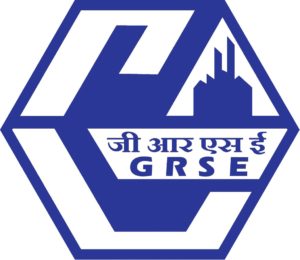Price action is among the most popular trading concepts. A trader who knows how to use price action the right way can often improve his performance and his way of looking at charts significantly. However, there are still a lot of misunderstandings and half-truths circulating that confuse traders and set them up for failure. In this article, we explore the 8 most important price action secrets and share the best price action tips.
#1 Support and resistance zones are better than levels
Support and resistance is probably the most popular price action concept, but only very few traders can actually make money with it. The reason is often very simple, although it’s not as obvious at first glance.
Most traders just use single, horizontal levels when it comes to trading support and resistance which look great in hindsight but fail during live trading. The reason is that singles lines are no effective way of looking at price movements. Creating support and resistance zones is much more effective when it comes to understanding price.
The screenshot below shows that the trader who just uses a single line either misses trading opportunities when the price does not reach his lines. Or he gets thrown out during volatility spikes; the trader who uses zones instead can filter out the noise that exists in the zones.
I hope that this concept doesn’t have to stay one of the price action secrets much longer and more traders will start using this technique.
Continue Reading →

What is price action trading and why it does make you a better trader
Price action trading is a type of trading that allows traders to observe and study the current market. This, in turn, allows you to anticipate the market trend and make certain assumptions/decisions based on the current (and actual) price movements.
Price action trading is the purest type of trading that eliminates all noise.
It does not anticipate, it reads the market.
Price action is great!
Is price action trading better than other types of trading?
Hard to say.
It is really difficult to say if one type of trading is better than another. What matters is which type of trading fits your personality.
Another important element of trading is money management. What matters is even not that much the trading system, but the way you use it.
Profitable traders will agree with me.
Continue Reading →
The benchmark indices ended marginally lower on Friday, weighed down by automobile and information (IT) stocks. The S&P BSE Sensex ended at 36,227, down 97 points, while the broader Nifty50 index settled at 10,930, down 47 points.
In sectoral indices, the Nifty IT index settled 1.1 per cent lower due to a fall in the shares of Infibeam Avenues which crashed 71 per cent to end at Rs 57.90. The Nifty Auto Index, too, fell 2.3 per cent driven by fall in Hero MotoCorp, Apollo Tyres and Mahindra & Mahindra.
Among individual stocks, YES Bank stock fell 9.5 per cent to Rs 183.90 on the BSE. The stock had hit an intraday low of Rs 166.15.
In broader markets, the shares of midcap and smallcap companies continued to remain under pressure on Friday as well, with the S&P BSE Midcap (14,762) and the S&P BSE Smallcap (14,643) indices hitting their respective 52-week lows in intra-day trade on the BSE.
Continue Reading →

As mentioned in my previous blog on the double slit experiment, things can act as both particles and waves at the same time. In fact, it is known that everything in the entire universe acts in this manner. In 1927, German physicist Werner Heisenberg introduced the Uncertainty Principle which states that we can not measure both the position and the speed of a particle with total accuracy. The more accurately we measure one value the more uncertain the other becomes. Heisenberg’s notion can be used to explain a number of phenomena including and not limited to Alpha Decay, which is a type of nuclear radiation and the most common form of cluster decay.
But, how does this relate to investing? Unfortunately, this isn’t going to eliminate all uncertainty from your investments or your business but it will enable you to embrace it and use it in your favour. There will always be uncertainty and risk in everything you do, and it is important not to get caught up attempting to eliminate it all.
The goal of an investor is to reduce risk as much as possible while still making a desirable return. Yet, risk and return are closely related meaning there will always be a degree of risk if you want to make great returns. In fact, there are two kinds of risk, unsystematic risk and systematic risk. Unsystematic risk is also known as “diversifiable risk” and can be reduced through diversifying your portfolio. Systematic risk therefore relates to all other risk such as the kind that comes with the market. This risk can not be controlled and diversifying your portfolio will not reduce this risk at all.
Continue Reading →

Aavas Financiers is entering the primary market on Tuesday 25th September 2018, to raise up to Rs. 400 crore via fresh issue of equity shares of Rs. 10 each and an offer for sale (OFS) of upto 1.62 crore equity shares by 4 promoter group entities and 2 top management personnel, both in the price band of Rs. 818 to Rs. 821 per share. Representing 27.93% of the post issue paid-up share capital, total issue size is Rs. 1,734 crore at the upper end of the price band, of which, OFS accounts for 77%. Issue closes on Thursday 27th September and listing is likely on 8th October.
Company Overview:
Aavas Financiers, established by listed NBFC AU Small Finance Bank (formerly AU Financiers) in March 2012, as AU Housing Finance, is a Jaipur, Rajasthan head-quartered affordable housing finance company, providing home loans of Rs. 8 lakh average ticket size to 60,000 customers, through its 166 branches in tier 2 to tier 6 towns across 8 Indian states, with gross loan book of Rs. 4,356 crore (30-6-18).
Continue Reading →

Investing is full of sports metaphors, most of which are drawn from blood sports such as boxing, strategic team sports including football, and individual sports where brains are as important as brawn, such as golf. Those sports are all full of common metaphors drawn from warfare. In fact, all sports are, in essence, proxies for warfare, which makes a 2,000-year-old text particularly relevant to sports, but also to investing as well.
Translated into many languages and still referred to as one of the great works on military strategy and tactics, the lessons of Sun Tzu’s The Art of War are particularly relevant to investors as they navigate increasingly complex asset classes and investment strategies.
Continue Reading →
 Garden Reach Shipbuilders and Engineers is entering the primary market on Monday 24th September 2018, with an offer for sale (OFS) of up to 2.92 crore equity shares of Rs.10 each by the Government of India (GoI), in the price band of Rs. 115 to Rs. 118 per share, with a discount of Rs. 5 per share for retail category. Representing 25.50% of the post issue paid-up share capital, total issue size is Rs. 340 crore at the upper end of the price band. Issue closes on Wednesday 26thSeptember and listing is likely on 5th October.
Garden Reach Shipbuilders and Engineers is entering the primary market on Monday 24th September 2018, with an offer for sale (OFS) of up to 2.92 crore equity shares of Rs.10 each by the Government of India (GoI), in the price band of Rs. 115 to Rs. 118 per share, with a discount of Rs. 5 per share for retail category. Representing 25.50% of the post issue paid-up share capital, total issue size is Rs. 340 crore at the upper end of the price band. Issue closes on Wednesday 26thSeptember and listing is likely on 5th October.
Company Overview:
Garden Reach Shipbuilders and Engineers is a Mini-Ratna Category 1 company under the Ministry of Defence, manufacturing warships for Indian Navy and Indian Cost Guard (90%+ revenue derived from them) under its ship building division. It also has an engineering division, accounting for less than 10% of revenues, manufacturing deck machinery for ships, pre-fabricated steel bridges and marine pumps. With 3 manufacturing facilities in Kolkata, company’s order book position (31-7-18) of Rs. 20,314 crore is very healthy, as it includes order for 3 ships for the Indian Navy, aggregating Rs. 19,300 crore, to be delivered from FY24 onwards. This will contribute to revenues meaningfully from FY21 onwards, as company is yet to commence work on these orders. Till then financial performance may be subdued as revenue peaks in the middle of the typical contract duration of 5-6 years.
Continue Reading →
The S&P BSE Sensex partially recovered after crashing over 1,400 points in from the day’s high to settle 280 points lower at 36,842 on Friday.
The Nifty 50 index hit a low of 10,866 levels, but settled 91 points lower at 11,143.
The decline came on the back of a sharp fall in NBFC stocks. DHFL skidded over 50% in intraday trade on fears of a liquidity crisis. The management, however, assuaged investor concerns and said the company has not defaulted on any repayments. The stock settled nearly 45 per cent lower at Rs 337.80 on the BSE. According to the analysts, the IL&FS crisis was the main reason behind the selloff. That apart, a rise in bond yields also weighed on the sentiment.
In the broader markets, the S&P BSE SmallCap index fell 3 per cent to 15,763 levels, while the S&P BSE MidCap index lost 1.7 per cent to end at 15,596 levels.
NSE’s Volatility Index (India VIX), or the fear gauge, rose by over 11%
YES Bank fell 34 per cent in intra-day trade after the Reserve Bank of India (RBI) trimmed Rana Kapoor’s tenure as its MD & CEO. The private sector lender said on Wednesday that the Reserve Bank of India (RBI) had allowed Kapoor to continue only till January 31. According to sources, the RBI has cited corporate governance and regulatory issues for not extending Kapoor’s term. Further, the lender has been directed to search for a successor.
Continue Reading →
Volume is representative of how many shares change hands in a stock, and as such, it indicates the interest in a security. Since each stock is different, and has a different amount of shares outstanding, volume can be compared to historical volume within a stock to spot changes, or compared to other stocks to find which are suitable for trading. Volume is also used to confirm price trends, breakouts, and spot potential reversals. Volume has also been implemented into indicators, which can aid in analyzing stocks (and other markets).
Volume Significance
Volume is important because it shows the level of interest in a stock. Current volume in a stock, relative to prior volume, shows if interest is higher or lower in a stock than it was before. High volume, or relatively high volume (compared to prior volume), is more suitable for active traders. Very low volume typically indicates a lack of interest and usually little price movement. Volume is also significant for screening stocks. Average volume—the typical volume seen in a day over a period time—helps greatly in this regard. Day traders need to be able to get in and out of a stock quickly and with ease, so they will want to trade stocks with high daily volume – typically 1 million shares at absolute minimum.Swing traders and investors have a little more leeway and therefore may trade stocks with lower volume, around 500,000 and 100,000 shares or more per day, respectively. They still want stocks that have enough volume to get in and out when they need to, but the urgency is not quite as high as it is for short-term traders.That’s the significance of volume as a defined number; here’s how to analyze it.
Analyzing Volume
There are three primary ways we can use volume in conjunction with price analysis: confirming trends (or not), spotting potential price reversals, and confirming price breakouts (or not).
Continue Reading →

Investment pundits – ourselves included – write a lot about how checking your portfolio too frequently is hazardous to both your financial and mental health. The evidence is overwhelming that those who check their portfolios on a daily basis tend to underperform those who check their portfolios less frequently.
The reason is simple: On any given day, there’s almost a 50-50 chance the market will be up or down. Because people dislike losses more than they enjoy gains – a behavioral finding known as loss aversion – people who check their portfolios daily find the process painful. And just like your gut reaction to pain is to draw away from the source of that pain, your gut reaction to seeing an investment lose money is to make a change. To sell. To panic. To act.
Changing your portfolio, or market timing as our Chief Investment Officer, Dr. Burton Malkiel calls it, is an investor’s Most Serious Mistake.
So what’s the solution? Just check your portfolio less often, right?
Unfortunately, things really don’t get much better if you check less frequently.
Continue Reading →













